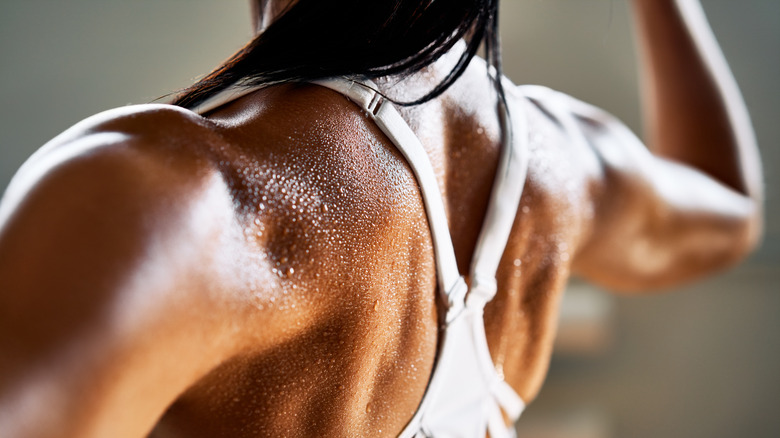How Drinking Hot Liquids Could Actually Cool You Down
Drinking a hot beverage on a hot, dry day can actually help your body cool down, according to a 2012 study published by the University of Ottawa's School of Human Kinetics. The primary focus of the study was to examine how warm liquids can affect body temperature (via Popular Science).
To find out, researchers studied cyclists in a lab for 75 minutes while they cycled in front of a fan and drank various glasses of water ranging in temperature from 35 to 122 degrees. During this process, researchers monitored the cyclists' body temperatures and tracked the humidity and air temperature in the lab. By the end of the study, researchers found that the cyclists who drank hot water sweated more and stored less body heat than those who drank cold water.
"What we found is that when you ingest a hot drink, you actually have a disproportionate increase in the amount that you sweat," Ollie Jay, the lead researcher of the study, told the Smithsonian Magazine. "Yes, the hot drink is hotter than your body temperature, so you are adding heat to the body, but the amount that you increase your sweating by—if that can all evaporate—more than compensates for the added heat to the body from the fluid."
How does this work?
At the end of the day, this all comes down to sweat. Drinking a hot beverage on a hot day can lead to increased sweating. If you're in an environment that allows this sweat to evaporate, your body temperature will go down (via Smithsonian Magazine). Since the cyclists were working out in front of a fan, their sweat was able to evaporate, allowing them to cool off.
Although this was the case for all the cyclists involved, those who drank hot water ended up sweating more, which resulted in a stronger cooling effect. If there hadn't been a fan nearby, however, it is unlikely that they would have seen the same results. The humidity is another key component here. That's because sweat doesn't evaporate as quickly or effectively in more humid climates. That's why this experiment only works in hot and dry regions of the country. If you're in a more humid area, like the East Coast, you're better off sticking to cold water.


